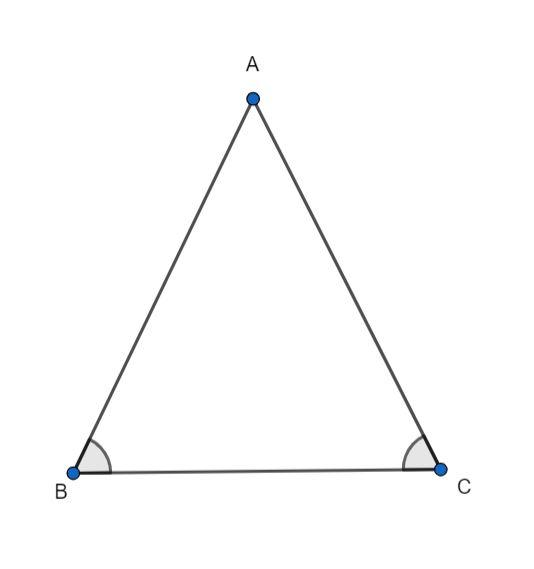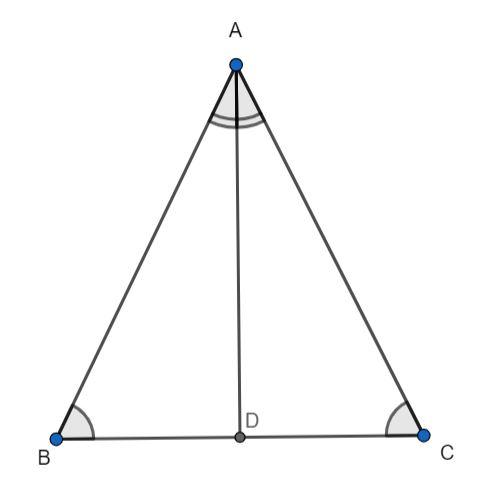Question
Question: What is the relation between sides opposite to equal angles? (a) Equal (b) Unequal (c) May or ...
What is the relation between sides opposite to equal angles?
(a) Equal
(b) Unequal
(c) May or may not be equal
(d) None of these
Solution
Hint: Construct an angle bisector from the vertex where the sides opposite to equal angles intersect and then using the properties of congruence of triangle, determine the relation between these two sides.
Complete step-by-step answer:

Consider triangle ABC, where angle B and angle C are equal. We need to determine the relation between sides AC and AB which are opposite to the angles B and C respectively.
It is given that angle B and angle C are equal, hence, we have:
∠ABC=∠ACB............(1)
We can determine the relation between sides AB and AC by constructing an angle bisector from vertex A and considering the resulting two triangles.
We draw an angle bisector AD from vertex A to intersect BC at D. Now, we have two triangles, triangle ADB and triangle ADC.

Let us check the triangles ADC and ADB for congruency.
We know that angle ABC is equal to angle ABD and angle ACB is equal to angle ACD.
∠ABD=∠ABC...........(2)
∠ACD=∠ACB...........(3)
Using equation (2) and (3) in equation (1), we have:
∠ABD=∠ACD...........(4)
Since, AD is the angular bisector, it divides angle A into equal angles as follows:
∠BAD=∠CAD...........(5)
The side AD is common to both the triangles. Hence, we have:
AD=AD...........(6)
From equations (4), (5) and (6), we observe that the two triangles are congruent by AAS (Angle-Angle-Side) criterion.
ΔABD=ΔACD (AAS - criterion)
We know that the ratio of the corresponding sides of congruent triangles are equal.
ACAB=CDBD=ADAD
Considering the first and the last term, we have:
ACAB=ADAD=1
AB=AC
Hence, the two sides are equal.
Hence, the correct answer is option (a).
Note: You may make a mistake if you try to construct a median from the vertex joining the sides opposite to equal angles and try to prove congruence between resulting triangles by SSA criterion, which does not exist for proving congruence between two triangles.
